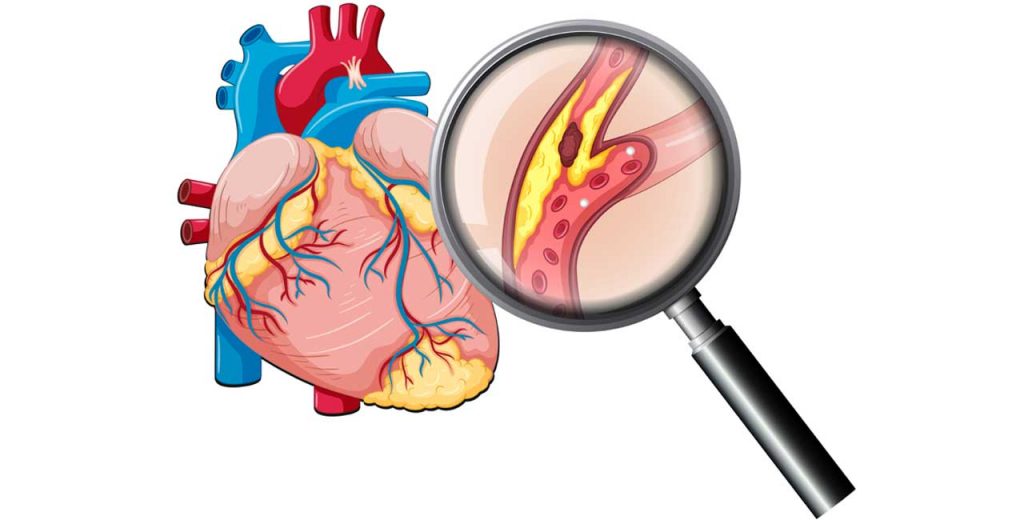- No products in the cart.
The Relationship between Lupus & Heart Disease
Home » The Relationship between Lupus & Heart Disease

Often called a mysterious illness, lupus is an autoimmune disorder that can affect any part of your body, including the skin, blood, brain, lungs, and kidneys. While the disease is rather widespread, the causes still remain unknown, and strangely, no two cases are alike. Yet, most people inflicted with lupus do not even seem sick. 90% of the people living with lupus are female. The disease is frequently found in women of Asian, Hispanic, or African descent more than in Caucasian women.
Lupus can attack arteries, blood vessels, tissues, and organs, which lead to their inflammation. Patients who have lupus must know that they are at an increased risk for cardiovascular disease, including heart failure, strokes, and heart attacks. For some, these cardiac symptoms may go unrecognized, especially if they are unaware of them. Most of the time, the patients overlook heart disease symptoms and attribute it to their inflammation since the disease limits their ability to exercise and stay fit.
Cardiac Symptoms
Patients with lupus can experience traditional risk factors such as:
- High blood pressure or hypertension primarily due to steroid use or kidney disease
- Diabetes also due to steroid use
- High cholesterol levels steroids inducing plaque that narrow the arteries
- Joint and muscle pain as a result of physical inactivity and excess weight
Generic
symptoms noticed:
- Feeling tired & weak
- Chest Pain
- Shortness of breath
Other lupus-specific risk factors may also be evident depending upon the dosage of the steroid, degree of inflammation, and the length of time that the person has had lupus.
Heart Disease
One of the most significant complications of lupus is heart disease, which is also a leading cause of death among people who have lupus. To determine if you have a heart condition on account of lupus, blood tests, chest X-rays, electrocardiogram, or an echocardiogram, may be required.
Myocarditis
The myocardium or muscle tissue of the heart is inflamed due to lupus. Unexplained irregular heartbeats and chest pain are some of the symptoms of myocarditis. However, even fungal, bacterial, and viral infections are caused due to the disease. Particularly for patients on immunosuppressants, lupus comes with an additional risk of myocarditis.
Pericarditis
When there is inflammation of the pericardium or the sac surrounding your heart, it is known as pericarditis. The patient experiences a sharp pain in the chest along with shortness of breath. The condition does not directly involve the heart tissue and therefore is not a contributing factor to the heart’s ability to function. Long-lasting or chronic inflammation, however, can interfere with the heart’s ability to pump blood while, additionally, scarring the heart tissue. If your heart does not have the strength to pump enough blood to the different tissues and organs, heart failure may occur. Although severe heart muscle disease may not be commonly caused due to lupus.
Coronary Artery Disease
Fatty molecules and other materials attach themselves to the walls of the coronary arteries that are responsible for moving blood to and from the heart. Over time, plaque is formed, and the blood vessels become narrower, restricting blood flow. Angina develops are a result of decreased flow of blood that eventually may lead to a heart attack. Lupus increases the risk for CAD or Coronary Artery Disease. People with lupus are more likely to develop atherosclerosis, which is also one of the leading causes of heart disease.
Endocarditis
Inflammation of the endocardium or the tissue that lines the inner walls and valves of the heart and enables separate chambers, is known as endocarditis. The surfaces of the heart valve develop lesions or wart-like growths and thicken as a result of lupus endocarditis. Bacterial endocarditis evolves when the lesions become infected. At times, a blood clot is formed, when a lesion breaks off and travels to the brain leading to potentially dangerous results.
Circulatory System
Capillary inflammation can cause breakage of the blood vessel, resulting in internal tissue bleeding. A small, purple or red dot may appear indicating inflammation, which can also be dangerous when it finds its way to the brain. The blood vessel walls are inflamed leading to vasculitis. Lupus-induced vasculitis varies depending upon the tissues that are involved.
Reach out to experts at SIMS Hospitals, Vadapalani, for treatment of all cardiological & vascular diseases.

